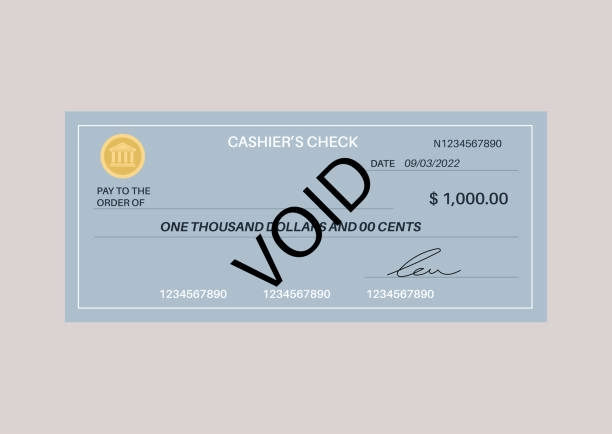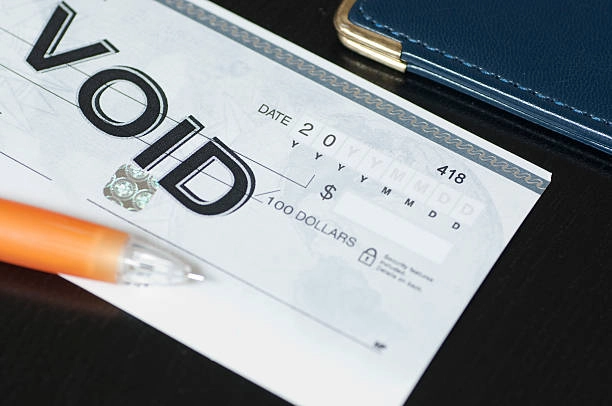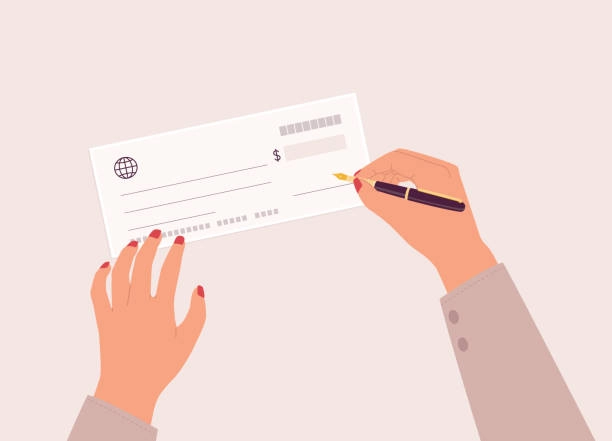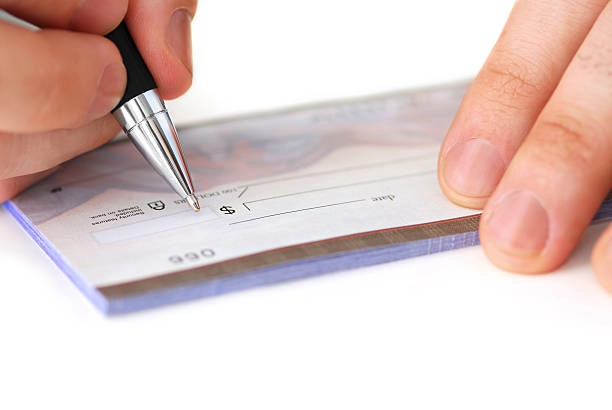When to Use and How to Get a Voided Cheque
To put it simply, a void cheque is a financial tool used primarily for quick and easy access to a person’s banking information. It has all of the data that a regular cheque would have, but because it is ‘voided’ - aka, the word ‘void’ is written across the front of the cheque in big, bolded letters - no financial institution will take it as payment.
Since all cheques have the intended recipient’s banking information written either on the front or the back, a voided cheque is a simple way to pass on that banking information to set up financial transactions like direct or recurring deposits without the risk of anyone using the cheque to submit payment. They’re a common tool and are highly used in banks all over the world.
Over the last few years, the popularity of void cheques has steadily decreased, primarily due to online tools and mobile banking. Sometimes, a mobile banking app will have the same information that a voided cheque would have, making it needlessly cumbersome to carry around. Alternatively, many credit unions and online banks also now issue direct deposit forms, which function similarly to a bank letter that includes your bank’s routing number and account information.
Direct deposit forms are similar to voided cheques in that they carry all the relevant bank account information needed to set up direct deposit for automated bill payments, but since they’re not cheques, they eliminate any security issues entirely.
The Process of a Voided Cheque

The term "void" is written in large letters across the front of a voided cheque using a blue or black pen. In order to prevent unintentional use, it is often written in huge letters. Voiding a cheque prevents it from being used as a blank cheque and "disables" it. To put it another way, a burglar who steals a canceled cheque is unable to make it payable to himself, enter a huge sum, and sign it.
Illustration of a Voided Cheque

For instance, you can offer a voided cheque if the payroll division of your business requires one from you in order to schedule electronic payments for your direct deposit. The paper check would then be voided, making it impossible for anyone to alter it and utilize it for online bill payments. The most common application of a voided cheque is to provide banking details so that an electronic connection to your bank account may be established, such as for direct deposit of your paycheque. They request a voided cheque since it has information about your bank and account printed on it, including:
what bank you use (or which credit union you use)
your banking information
a number designating your bank (called a "routing number")
Your cheque's bottom magnetic ink digits provide all the information you need to deposit or withdraw money. In the following circumstances, you might need to cancel a cheque:
Direct deposit: In order to get the money to the correct place when your employer pays you online, your account details will need to be provided. The fairly straightforward process for the employer to obtain this bank account information and verify its accuracy is through a voided cheque, often handled by the automated clearing house.
Setting up payments: You might need to give a voided cheque to set up automatic recurring payments for automated bill payments if you wish to quit writing paper checks for costs like rent, mortgage, and insurance. If you sign a contract enabling automatic payments, the money will be taken out of your account automatically every month; otherwise, you'll have to set up each payment separately.
Errors: If you write out a cheque incorrectly, such as entering the wrong details on the payee line or date line, ensure that you void it to avoid duplicate checks. You won’t use it for anything, and it’s dangerous to maintain a blank check that is just partially filled out.
When to use a voided cheque?

Void cheques are best used in situations where someone requires your banking information. They’re fast, efficient ways to show the receiving bank or financial institution:
Your banking details, and
The fact that you have a bank account open with another registered institution
In addition to simply showing the receiving bank your details, it also acts as a soft form of verification; people with bad intentions rarely have void cheques because in order to access a checkbook, one usually needs to have developed some sort of trust with a previous financial institution.
Therefore, void cheques act as a sort of social signal that you’re (somewhat) well-adjusted, and many banks actually require either a void cheque or a direct deposit form in order to set up an account - even if you have all of your necessary banking information on hand. Need a voided check is common among the self-employed, primarily because self-employed people are more likely to have to make loan payments or expense reimbursements to third parties, subcontractors, and vendors.
As a tool, void cheques can be invaluable to the ease with which a sole proprietor or independent contractor sets up their business. If you’re self-employed, we also recommend (in addition to void cheques) that you utilize software to generate your own invoices, create your own pay stubs, and manage your business efficiently. Setting up the proper banking information, accounting, and infrastructure can be critical to the longevity and success of any small business or sole proprietorship, so it’s important to take steps now to maximize the likelihood of your success.
How to get a voided cheque

Voiding a check is, for the most part, easy to do and an essential part of managing your personal finance. There are several ways to do so. First, you can request a void cheque from your bank - many banks have designated ‘void’ cheques with a standardized voiding procedure to maximize your security and decrease the likelihood of someone using that cheque to create a payment.
This approach can take some time, since usually the bank needs to print those cheques for you or order them in. An alternative approach is voiding cheques yourself. This allows you to do the voiding yourself, without needing to wait several days (or weeks) for a bank to print the voided cheques for you.
To void a check yourself, all you need to do is grab a thick pen (blue or black pen works best because they’re very difficult to remove), take your cheque, and write “VOID” in large letters and capital letters. Ensure that your writing covers the length and height of the cheque, such that a malicious actor or criminal would be unable to piece together a cheque from multiple smaller pieces of the areas that you didn’t write over. In the past, there was a concern that a criminal could simply take the paper, remove your writing (through elaborate means), and thus have access to a blank cheque with your - or your businesses - name on it.
Today, it’s very difficult to “unvoid” a cheque, so simply writing the word “VOID” across it is usually good enough. We hope you enjoyed our article on when to use and how to get a void cheque. Void cheques are invaluable tools for small businesses, the self-employed, and pretty much all users of modern financial institutions. Though they’re decreasing in popularity, it’s still essential to know how to use a void cheque in modern society - so pat yourself on the back!
Why does a bank void a check? Reasons for voiding a cheque

You may need to invalidate a cheque in a number of circumstances, some of which have already been addressed. Here are the most typical situations in which you would need to understand how to void a cheque, to sum up.
Establishing direct payments: If you wish to arrange electronic payments, whether for personal use or if you run a business, you might need a voided cheque. For instance, voiding a cheque can be required to set up automated payments if your company has vendors that prefer to be paid electronically.
Automatic deposit: Your company or a government agency will need your bank account number from your savings account to set up a direct deposit and routing number in order to begin direct deposit, which can speed up the payment process for you. The simplest approach to convey those details is by voting a cheque.
Regular payments of bills: If you want to pay bills online from your checking account to pay your mortgage, auto loan, student loan, or other bills, you might need to submit a voided check.
Remember to always check to void a cheque, as it could also be required if you write a cheque incorrectly. To prevent the person or company you write the cheque out to from cashing or depositing it, for instance, you would need to invalidate the cheque if you wrote the erroneous dollar amount.
Why do businesses require a canceled cheque?
As a quick and easy way to gather your banking information for direct deposit, employers typically ask for a canceled cheque. Your employer can arrange to have your paycheque directly deposited into your account on payday using the routing and account details from your cancelled cheque, saving you time and aggravation.
How to obtain a void check for direct deposit
Even if you don't possess paper checks, you can still take advantage of direct deposit benefits.
Here’s how you can secure a voided check for setting up direct deposit:
Visit Your Bank: Approach a teller at your bank and request them to print a voided check for you. This is often a simple process and serves as a future reference to prevent issues like identity theft. Ensure the word void is written across the entire check-in big letters, which typically appear over the signature line to prevent misuse.
Digital Banking Solutions: If your bank offers digital banking, they may provide virtual tools or paper forms that can be used to set up direct deposits without needing a physical check.
Gathering Necessary Account Information: If your employer uses a form instead of a voided check for direct deposit setup, you will need to collect some sensitive information from your bank, which includes:
Your account routing number is unique to each bank and essential for identifying your bank's electronic address.
Your account number is specific to your account and crucial for ensuring that benefit checks are deposited into the correct account.
The name and the headquarters' city and state of the bank, not just the branch you normally visit.
Alternative Methods: Inquire at your bank if they have instructions on how to write void on a check or if they can directly assist in setting up auto-pay or direct deposits into a new account.
By ensuring you have all the required information handy, you can safely and efficiently set up direct deposit to benefit from faster access to funds while minimizing the risk of losing physical checks.

